My wife and I visited Hawai'i in 2004 and were fortunate enough that we were able to view lava from Puʻu ʻŌʻō, erupting on Kīlauea's East Rift, flowing into the ocean at night. The experience was one of the most amazing sights in Nature that we'd ever seen.
I didn't have much of a camera then or even a tripod with me, but I did manage to record a few decent photos of the site. Here's one of them:
As we were planning our 2014 trip I knew that I needed to bring my DSLR and a decent tripod to be able to record any nighttime lava action.
Of course Pele does what she wants and there was no lava flowing into the ocean during our recent visit. Lava is still erupting from Puʻu ʻŌʻō, but was not easily accessible during our visit. We later paid a visit to Puʻu ʻŌʻō but that will be in Volcano! Part 2.
Fortunately, there is Hawai'i Volcanoes National Park. Within the park is the Kīlauea caldera and within that is Halemaʻumaʻu crater. There's a lava lake in Halemaʻumaʻu and, while the lava isn't directly visible, after dark the glow of the lava illuminates the volcanic gasses. It makes for a wonderful show.
Even in the daytime the crater is an impressive sight.
We headed up twice (July 26 & 28) to see Halemaʻumaʻu--both times just before sunset. I did some time-lapse photography. I adjusted the position of the camera a bit now and then, but the results aren't too bad.
Here are some stills that I shot from the second evening.
One way to catch the volcanic action without making the trip to Hawai'i is to look at the USGS Hawaiian Volcano Observatory's website. They have a live webcam pointed looking down at the lava lake. Here's a shot I grabbed from last Saturday:
It looks like the recent hurricane has kept the webcam from updating right now but it provides dramatic look into the crater showing the darker crusted over lava sheets floating on the bright molten lava lake.
While we were in Hawai'i we had another volcano adventure which will be the subject of my next blog post.
I didn't have much of a camera then or even a tripod with me, but I did manage to record a few decent photos of the site. Here's one of them:
As we were planning our 2014 trip I knew that I needed to bring my DSLR and a decent tripod to be able to record any nighttime lava action.
Of course Pele does what she wants and there was no lava flowing into the ocean during our recent visit. Lava is still erupting from Puʻu ʻŌʻō, but was not easily accessible during our visit. We later paid a visit to Puʻu ʻŌʻō but that will be in Volcano! Part 2.
Fortunately, there is Hawai'i Volcanoes National Park. Within the park is the Kīlauea caldera and within that is Halemaʻumaʻu crater. There's a lava lake in Halemaʻumaʻu and, while the lava isn't directly visible, after dark the glow of the lava illuminates the volcanic gasses. It makes for a wonderful show.
Even in the daytime the crater is an impressive sight.
We headed up twice (July 26 & 28) to see Halemaʻumaʻu--both times just before sunset. I did some time-lapse photography. I adjusted the position of the camera a bit now and then, but the results aren't too bad.
As darkness fell, I was starting to get pretty worried that we wouldn't end up with clear skies at all.
Look closely and you'll see that there are stars in the photo above. Two in particular were of special interest to me. Look on the right just above the darker clouds. That's Alpha Centauri (the leftmost of the two) and Beta Centauri (to the right). Alpha Centauri is, of course, famous for being the brightest member of the system of stars that is closest to our own solar system. It is too far south to be seen from Arizona, so catching it was a thrill.
As the sky grew darker the low clouds cleared away leaving a magnificent star-filled dark sky, free of all artificial light.
Only the glow of Halema'uma'u itself competed with the stars. Well....the annoying people trying flash photography of the crater were causing their own periodic light pollution too but I digress.One way to catch the volcanic action without making the trip to Hawai'i is to look at the USGS Hawaiian Volcano Observatory's website. They have a live webcam pointed looking down at the lava lake. Here's a shot I grabbed from last Saturday:
It looks like the recent hurricane has kept the webcam from updating right now but it provides dramatic look into the crater showing the darker crusted over lava sheets floating on the bright molten lava lake.
While we were in Hawai'i we had another volcano adventure which will be the subject of my next blog post.

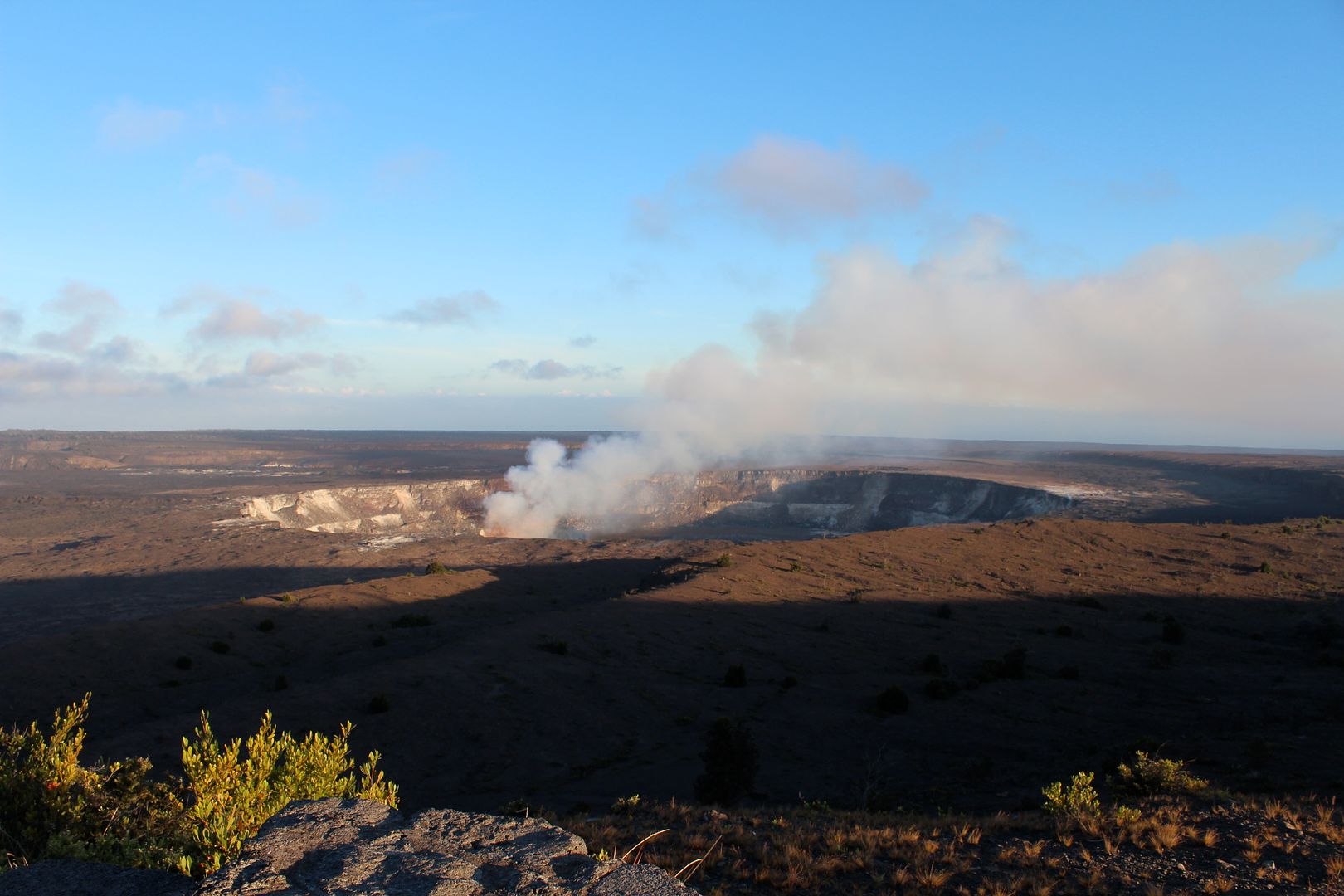
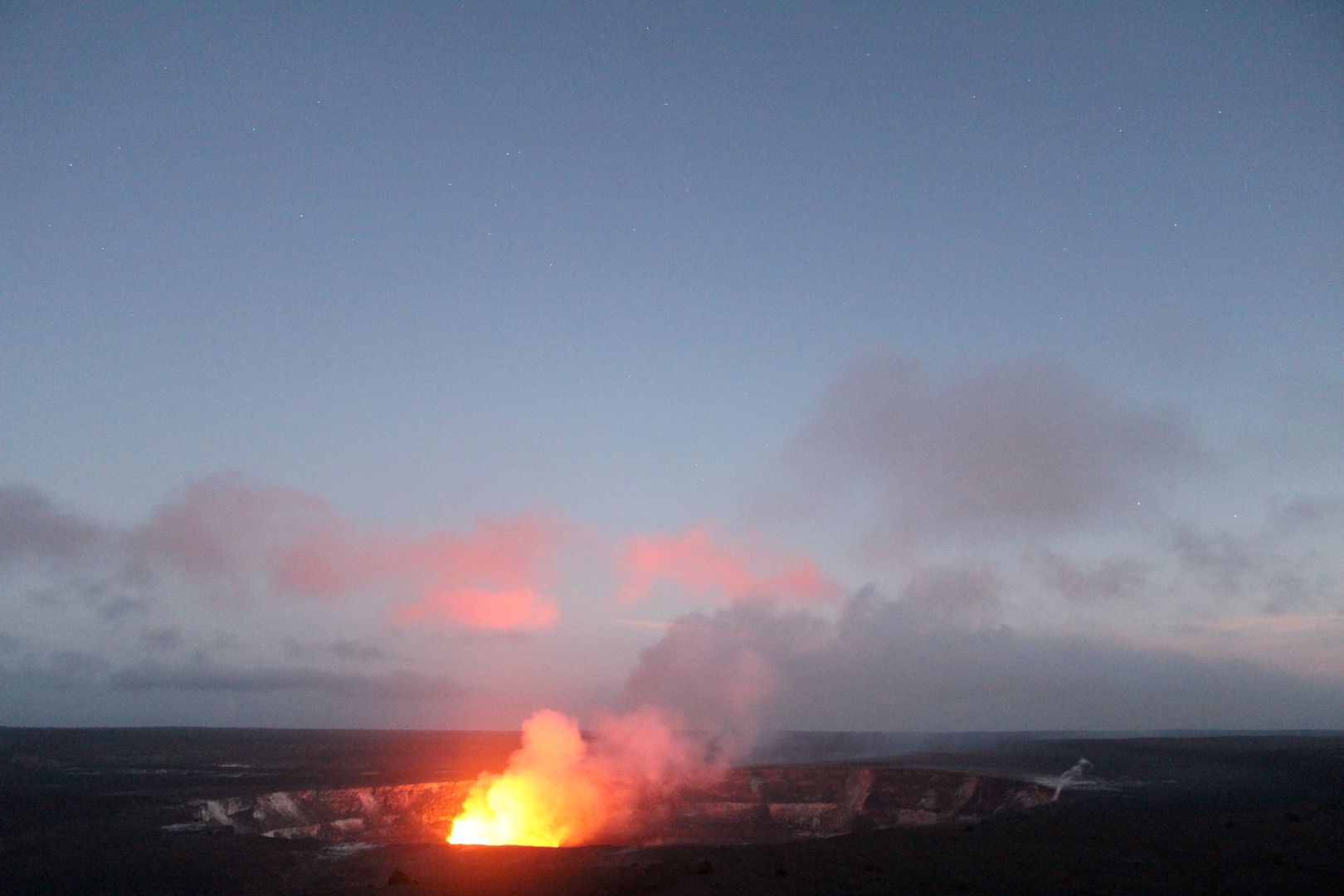
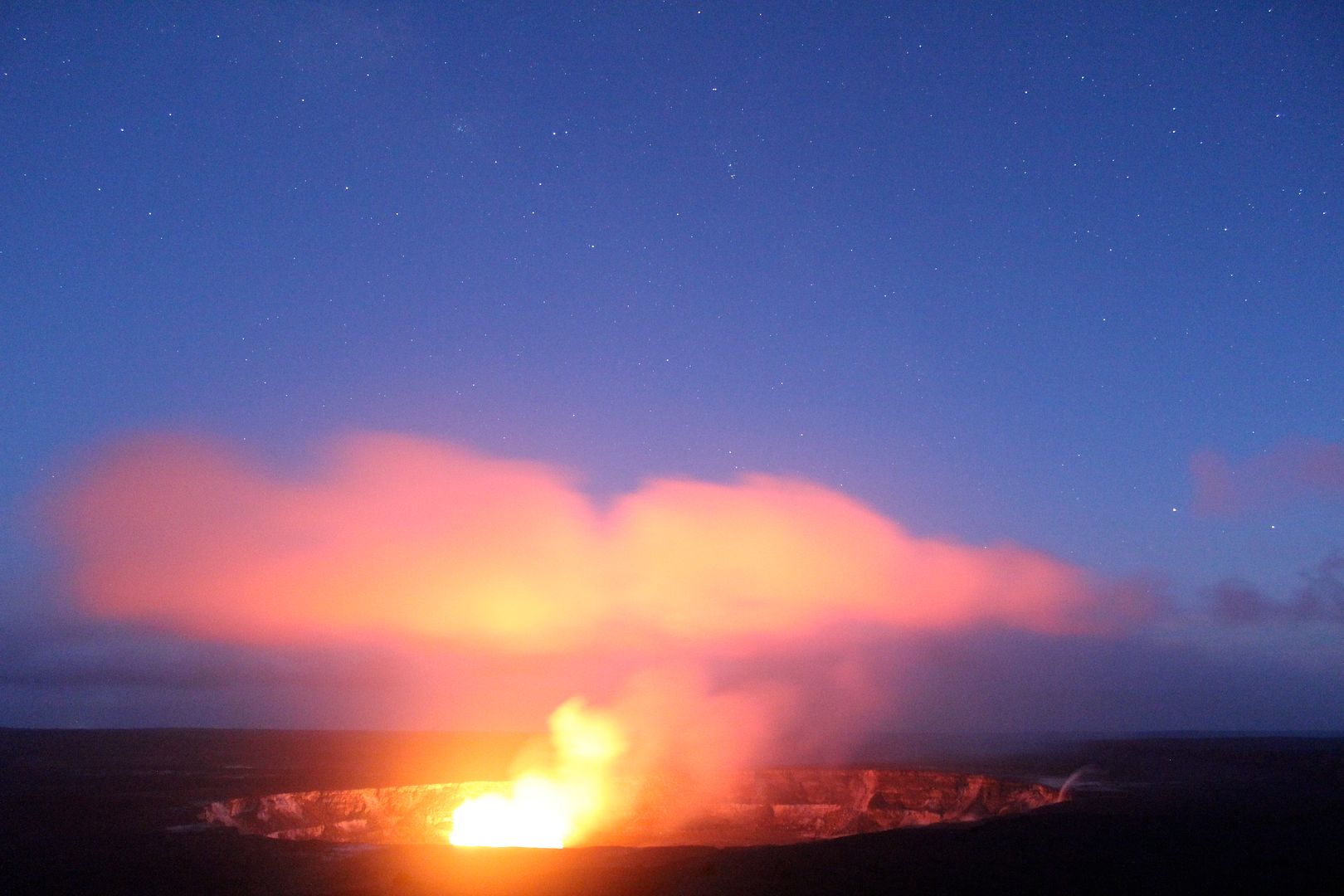
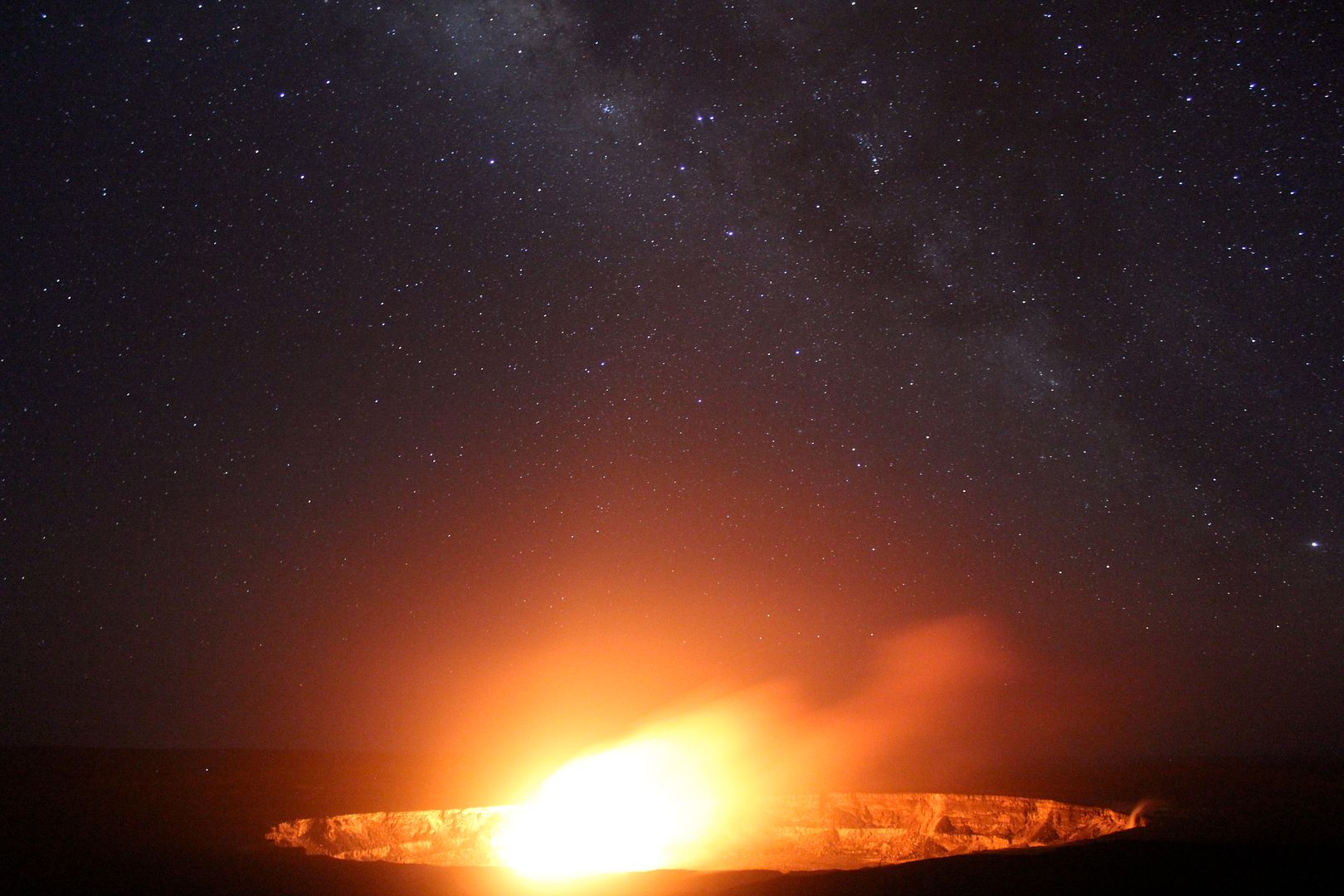
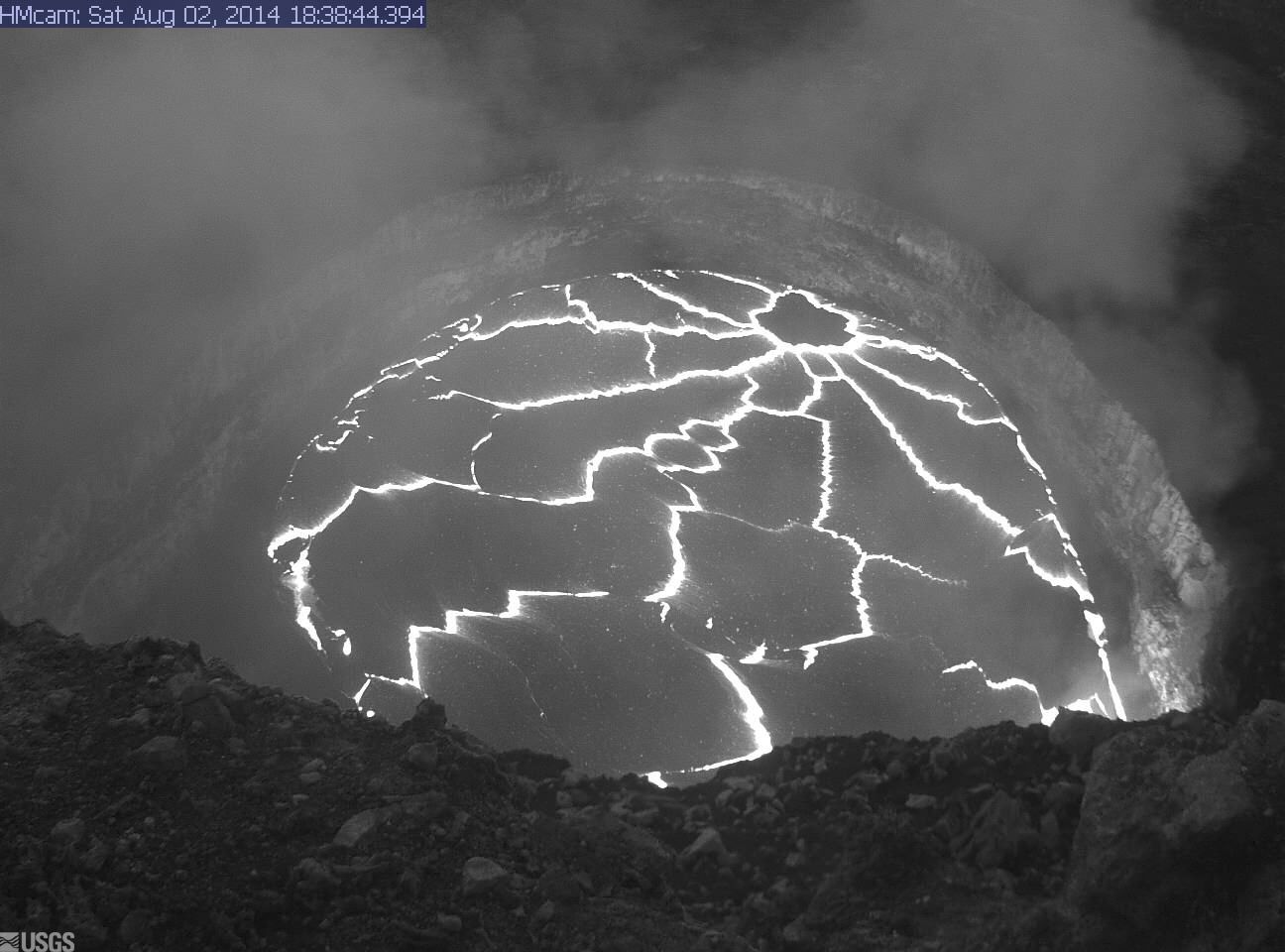
No comments:
Post a Comment